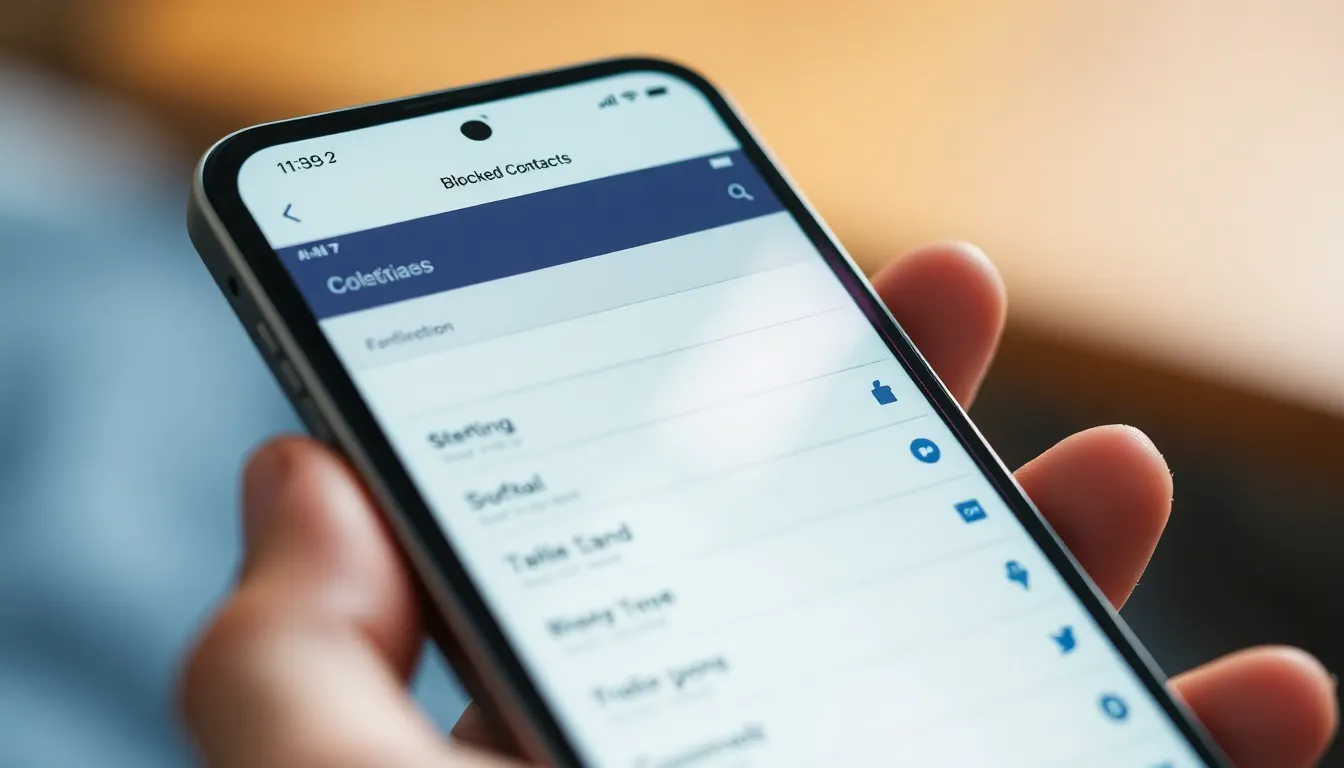Ever found yourself wondering what those pesky blocked numbers are up to? Maybe it’s an ex trying to reach out or a telemarketer plotting their next move. Whatever the case, curiosity can get the best of anyone. Fortunately, iPhone users can easily uncover this mystery and see who they’ve decided to ghost.
Table of Contents
ToggleUnderstanding Blocked Numbers on iPhone
Blocked numbers represent contacts that users do not wish to communicate with anymore, such as ex-partners or persistent telemarketers. Identifying these numbers provides an insight into who is trying to reach you without your consent. Apple’s blocking feature allows control over unwanted interactions.
Accessing blocked numbers on an iPhone is straightforward. Navigate to Settings, then Phone, followed by Blocked Contacts. This list displays all blocked numbers. Users can manage this list easily, deciding which contacts to block or unblock at any time.
Knowing how to show blocked numbers can clarify past decisions about unwanted calls and messages. Each blocked entry includes phone numbers or contact names, ensuring users recognize who they’ve chosen to block.
Some users may wonder about the consequences of unblocking these contacts. Unblocking allows future interactions, but it also prompts previously blocked numbers to show up in upcoming call logs and messages. Users should weigh their options carefully.
Understanding the implications of unblocking helps maintain peace of mind. Curiosity about blocked contacts often leads to unblocking them, but users must consider the reasons behind their initial blocking decision.
Reviewing blocked numbers enables users to reflect on their communication preferences. Keeping track of these contacts helps in avoiding unwanted connections while managing personal boundaries.
How to Access Blocked Numbers List

Accessing the blocked numbers list on an iPhone is simple. Users can easily manage their blocked contacts through the Settings menu.
Steps to View Blocked Numbers
- Open the Settings app.
- Scroll down and tap on Phone.
- Select Blocked Contacts at the bottom of the menu.
- The list displays all blocked numbers and contact names.
Identifying blocked contacts occurs quickly. Users can also choose to unblock numbers from this list by tapping Edit and selecting the red minus icon next to the number.
Alternative Methods to Check Blocked Numbers
Viewing blocked numbers can also happen through the Messages app. Open Messages and start a new conversation. Start typing the contact’s name in the recipient field, and if unblocked, the name appears.
Utilizing the FaceTime app offers another approach. Check for blocked contacts by starting a FaceTime call. Users can see unblocked contacts in the call list if they appear as accessible.
Managing Blocked Numbers
Managing blocked numbers on an iPhone enables users to regain control over their communication preferences. Users should understand how to unblock contacts or add new numbers to the block list.
How to Unblock a Number
Unblocking a number on an iPhone involves a few simple steps. First, users must navigate to the Settings app. Next, they should scroll down and select Phone, then Blocked Contacts. Tapping Edit at the top right reveals the red minus icon next to each blocked number. Pressing this icon unblocks the desired contact, and a confirmation prompt appears. Finally, users confirm their choice to restore the contact’s ability to call or text.
How to Add a Number to the Block List
Adding a number to the block list is a quick process. Users can access the Phone app and find the contact they want to block. After selecting the contact, scrolling down reveals the option to Block this Caller. Tapping Block this Caller prompts a confirmation message. Once confirmed, the number joins the block list, effectively preventing unwanted communication. Alternatively, users can block numbers directly from recent calls by tapping the information icon next to a number and selecting Block this Caller.
Tips for Using Blocked Numbers Feature
Accessing the blocked numbers feature on an iPhone maximizes users’ control over their communications. Users can periodically review this list to ensure it accurately reflects their preferences. Recognizing the names and numbers helps clarify any previous decisions regarding communication.
Utilizing the Settings app makes it easy to view blocked numbers. Users navigate to the Phone section and tap on Blocked Contacts. Understanding how to manage blocked contacts empowers users to tailor their interactions.
Unblocking a number is straightforward. Users select Edit and then tap the red minus icon beside the number they wish to unblock. This process reinstates the contact within call logs and messages, so users should remember their reasons for blocking before unblocking.
Considering privacy is essential. Users can delete any unwanted contacts in the block list to maintain personal boundaries. Trusted sources advise evaluating the potential for unwanted interactions before modifying the blocked contacts.
Using alternative methods for managing blocked numbers can enhance user experience. Accessing Messages or FaceTime allows users to easily spot unblocked contacts by initiating new conversations. This flexibility ensures users have direct access to their communication history.
Periodically checking the blocked list aligns with maintaining a healthy communication environment. Users benefit from reassessing their preferences to ensure that the block list remains relevant. Staying proactive about this feature fosters better management of personal communications.
Managing blocked numbers on an iPhone empowers users to take control of their communication. By regularly reviewing the blocked contacts list users can ensure it reflects their current preferences and boundaries. Understanding how to access and manage these numbers not only clarifies past decisions but also enhances the overall communication experience.
As users navigate their interactions it’s essential to weigh the implications of unblocking contacts. Staying proactive in this area fosters a healthier environment and helps maintain personal privacy. With these tools at their disposal users can confidently manage their connections and enjoy a more tailored communication experience.


